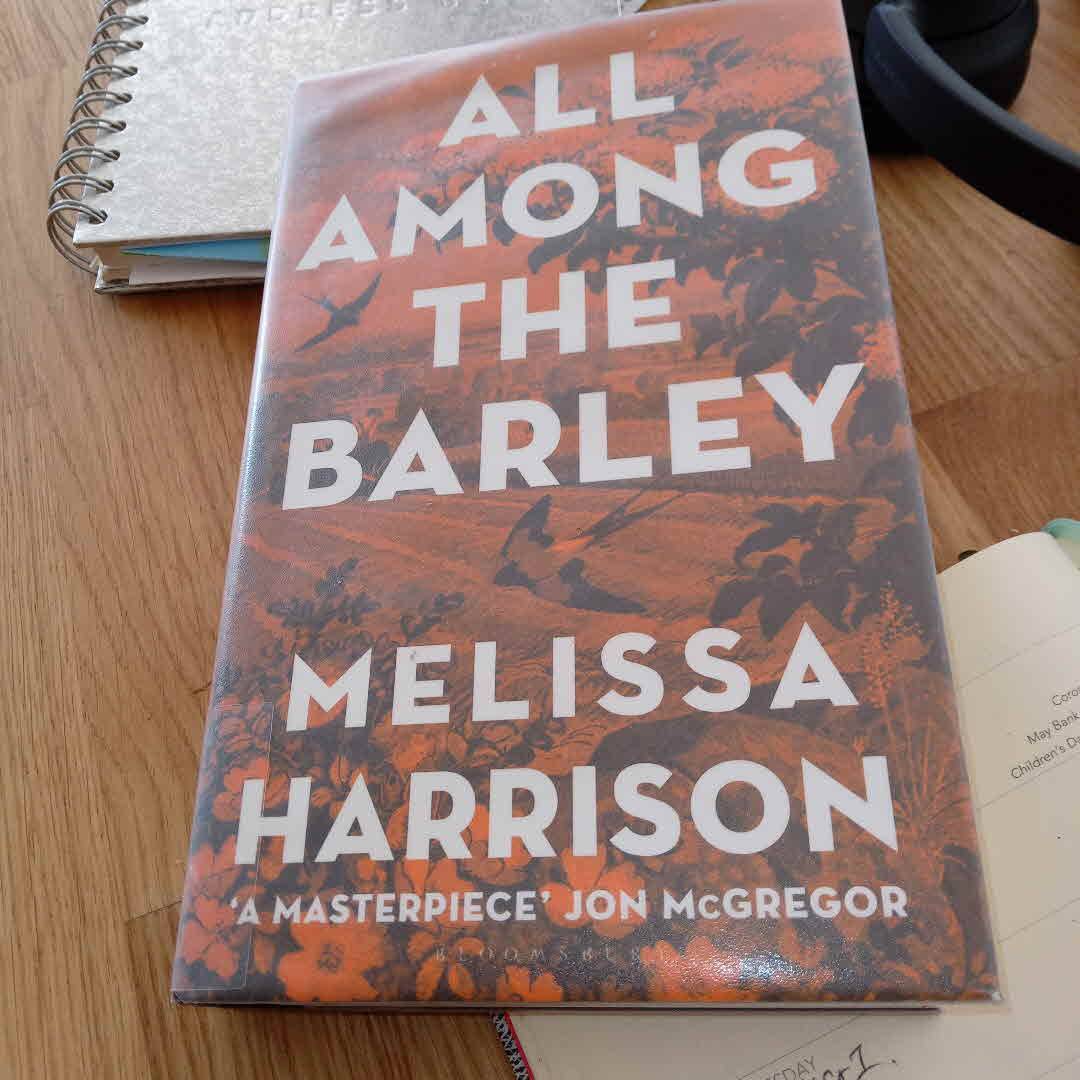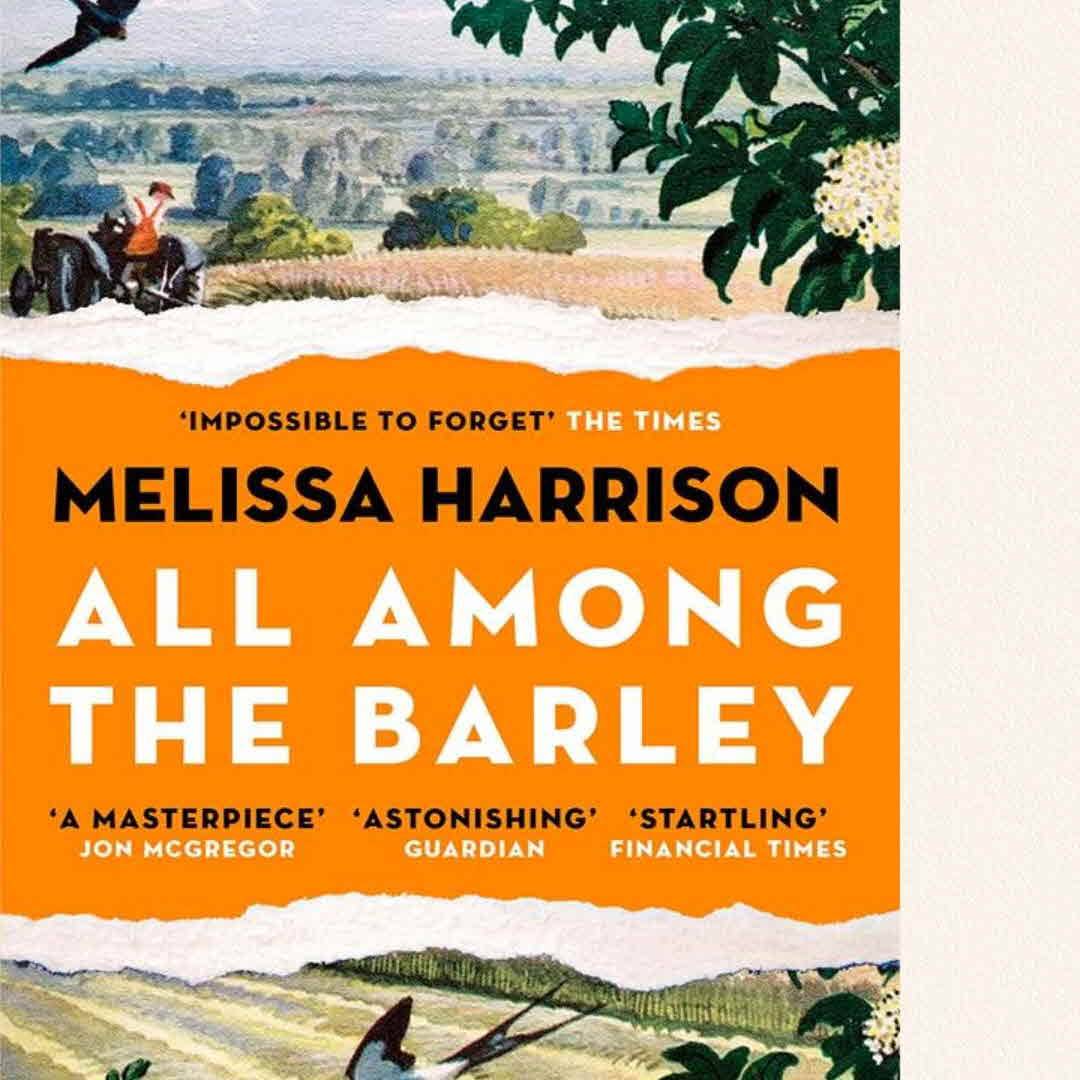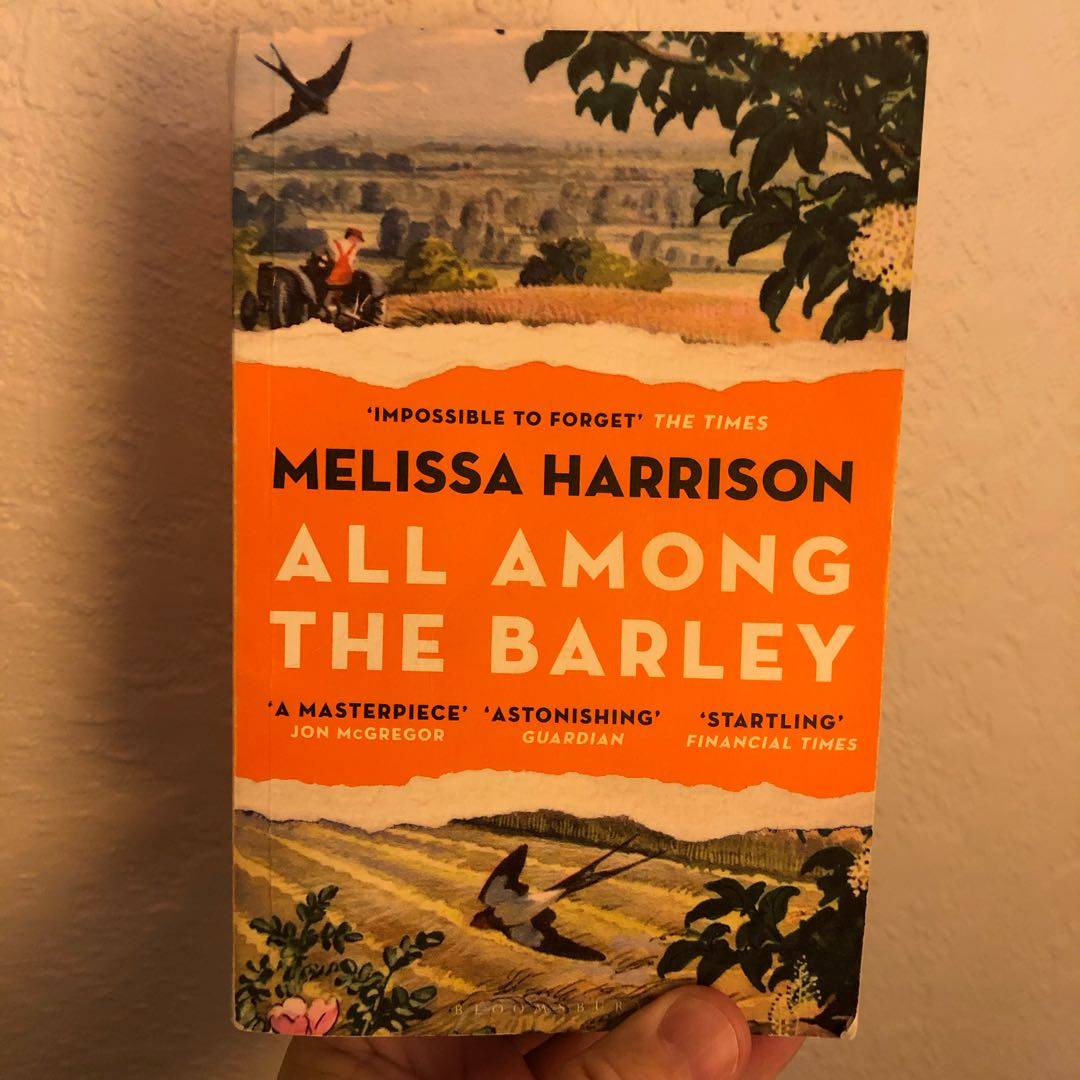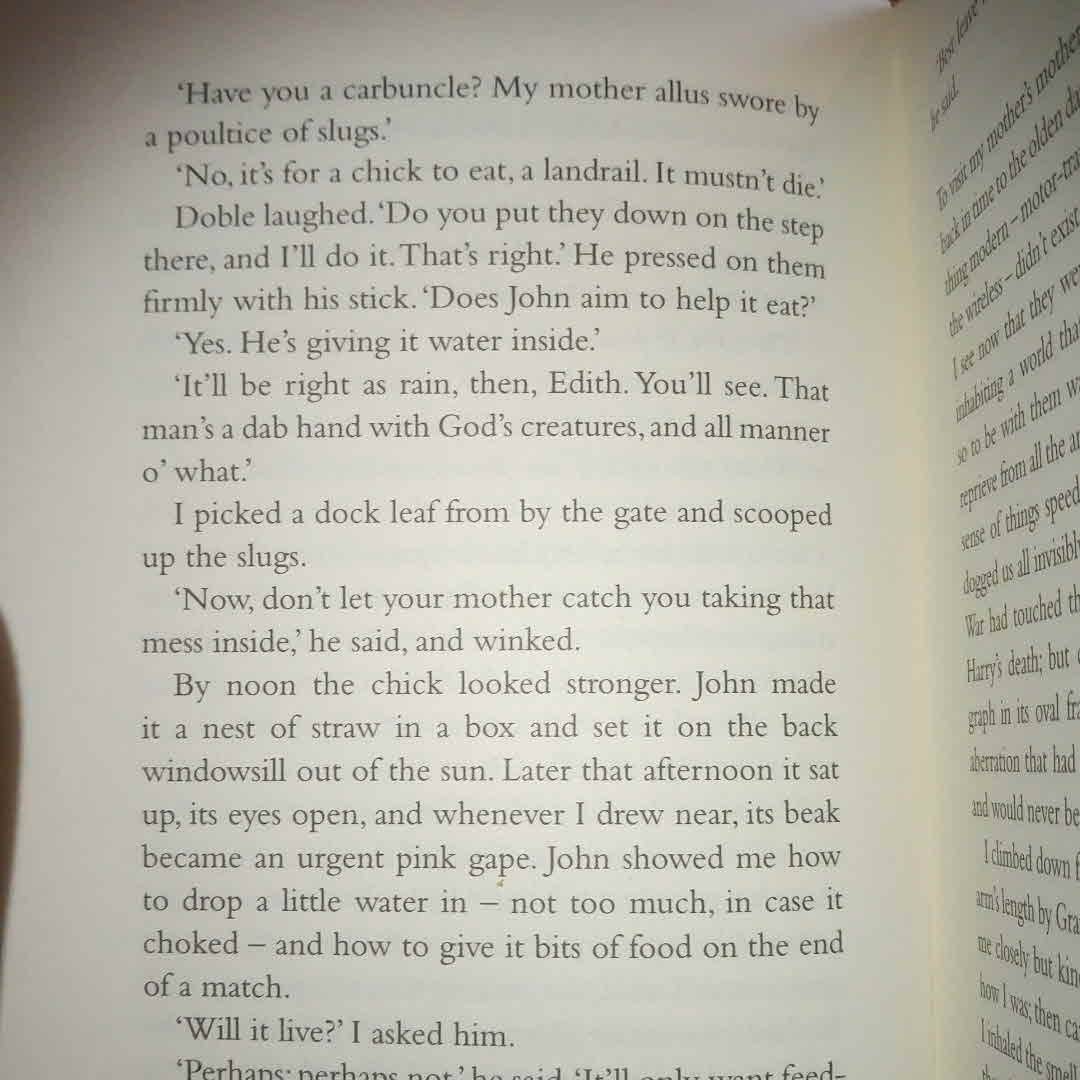
The third novel I've read by her and I didn't find it as flowing as her other two.
I liked the idea but found it too disjointed in content and thus unbelievable.

The third novel I've read by her and I didn't find it as flowing as her other two.
I liked the idea but found it too disjointed in content and thus unbelievable.

Set on an arable farm in the 1930s, MH's nature-writing is marvellous (as expected!). She got me invested in Edie's coming of age story. I would have loved to see more of Ada's experience and perspective, too. (Constance made my hackles rise from the get-go!). The ending was abrupt and, for me, the epilogue fell flat. In conclusion, I loved it, save for the final 20 pages which fell somewhere between "harrumph!" and "hnnh?".

It's an arable farm. Why to goodness would they be making their own butter and cheese?!

Just finished this book and I‘m reeling. Here is some of the best, most idyllic, nature writing I‘ve ever read. You could just stretch out and luxuriate in the blissful rural images Harrison creates. But this is more than just a story of a young girl coming of age in a rural community. There is something darker at the heart of this novel and I feel twisted in knots at the end of it ⭐️⭐️⭐️⭐️ ⬇️

The book portrays in details, tone, & language life on an English farm in the 1930s. 14 year-old Edie works more on the farm just as she‘s becoming aware of her body, finding her voice, & exploring what could be a maternal witch lineage. Enter Connie, a forthright city women writing about the fading rural traditions of England, but with a more insidious agenda lurking in her enthusiasms. Lovingly portrayed but unsentimental, the tale delighted me.

September stats: 34 books + 1 abandoned partway. Only reading the best, obviously, because I gave 15 books 5 stars on Goodreads. 😊

The glory of the farm then, just before harvest: acres of gold like bullion, strewn with the sapphires of cornflowers and the garnets of corn poppies and watched over from on high by larks.

An atmospheric novel set in the British countryside in 1933. Fourteen-year-old Edie Mather will have her life turned upside down when a young woman journalist from London shows up, wanting to document the old ways that are disappearing. Nuanced characterization, a vivid depiction of rural life, and a powerful story. I loved it.

She‘s a waistcoat short of a button, Mary used to say.
(Photo: my friend Jen made a button dress as a COVID project. Shaun Tan fans, take note of her tattoos.)

She laughed. “Or perhaps it just means you‘re the kind of person who thinks too hard about things.”
I straightened up for a moment & tried to fasten my hair better, away from the perspiration on the back of my neck.
“I don‘t know how to stop, though.”
“Stop what?”
“Thinking too hard. I don‘t know how else to be.” I was surprised to feel my eyes swim with sudden tears.
“Oh Edie, you don‘t need to be any different at all, don‘t you know that?”

I read The Midnight Folk & spent my days pretending to be Kay Harker & embarking on imaginary adventures involving knights, smugglers & highwaymen, Rollicum Bitem Lightfoot the fox & a coven of witches so terrifying I eventually wrapped the book in a feed-sack & buried it under the dung-heap in case they should burst from its pages & carry me away, so consuming had my enthusiasm become.

Beautifully descriptive, coming of age story that takes place in the English countryside.🌼

The story of 14 yr old edie mather and a year on an ehglish farm is a beautifully told story told by a writer who weaves a fascinating tale with (as she did in at hawthorn time) wonderful depictions of the countryside to the extent that i felt that i was wandering in the 1930's fields noticing birds and plants. She then adds a sharp thread with anti semitism and nationalism which is so relevant today. Definitely a highlight of my reading year.

#musicalnewyear #feedthebirds
And here was i thinking id skip a challenge and then i happen upon the heroine of my book feeding squashed slugs to a landrail chick.
I loved 'at hawthorn time' by this author with her wonderful writing about the English countryside and this is similarly a lovely read so far - has a feeling of cider with rosie as the plot revolves around a 1930's English farm.

Second book of 2019 and my first five star read
#fivestarread
Set in the 1930s from the viewpoint of 14 year old Edith who thinks she doesn't fit in with the world round her. It's slow moving, full of nature, and seemingly quite innocent but beneath the surface there is a sense of impending doom, and the increasing fear of difference is scarily relevant today.

Saturday night craziness!
Am loving this book so far - brilliantly depicting the changes to class, gender, urban vs rural life in the period between the wars.

I love Melissa Harrison's writing of people-in-their-landscape, and of her books I've read so far, this felt to me the most complete.
It's 1933. Everything is threatening to change for bookish farmgirl Edie. She's 13, her sister's married, and farms across the county are struggling. Into her very small world comes Constance, studying the traditional way of life, arguing politics with the menfolk, writing articles and 'helping out'. 👇

One of these days I'll actually get round to reviewing this one. Meanwhile...
Edie grows up seeing the witches marks in the beams above her bed. When ancient charm bottles are found on a neighbouring farm, her mother is the person who is called. And everyone fears/respects her grandmother. What's a girl to think?
#IPutASpellOnYou #octoberxfiles

I really like Melissa Harrison - she writes very earthy, rural novels that leave you with being able to smell the land.